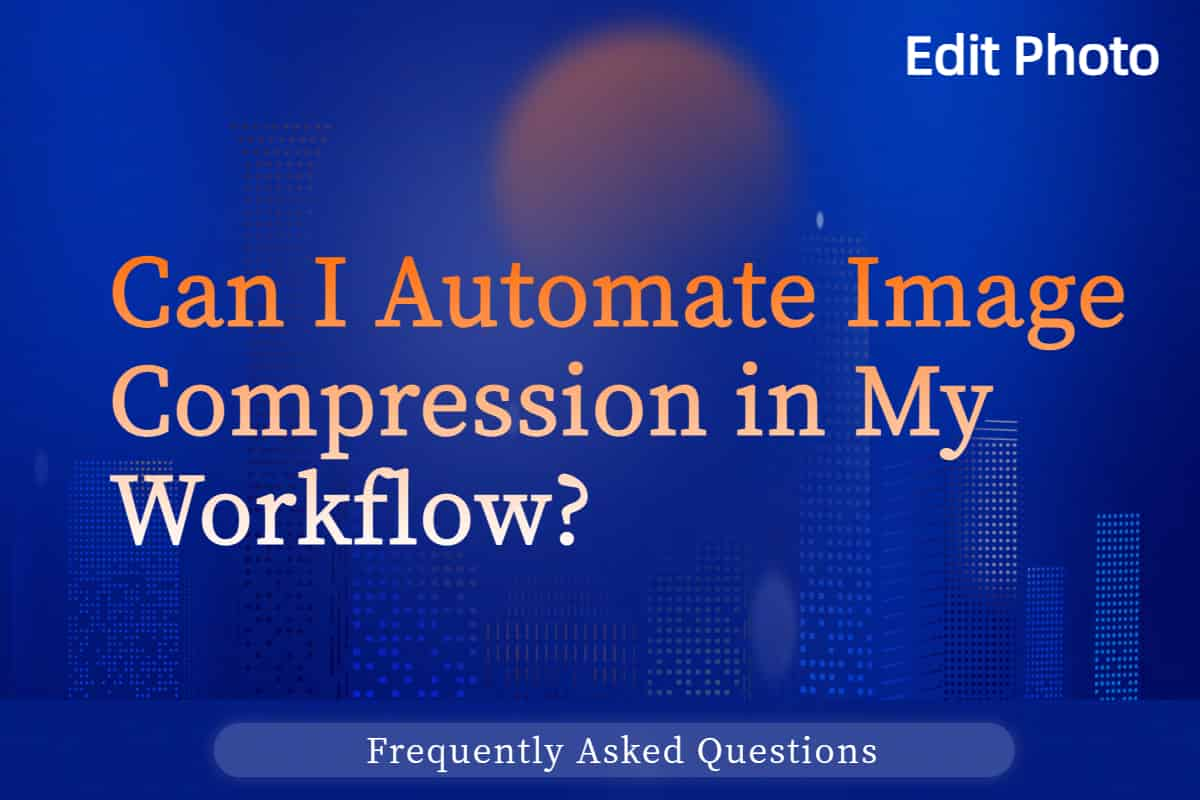Can I Automate Image Compression in My Workflow?

Manually compressing images one by one can feel like herding cats—time-consuming and prone to slip-ups. If you’re wondering whether you can automate image compression in your workflow with Edit Photo, the answer is a resounding yes. Whether you’re a web developer, a photographer, or a content manager, automating this task can streamline your process, save hours, and keep your image optimization consistent. Here’s how it works and how to set it up.
Why Automate Image Compression?
Image compression is a must for fast websites, lean storage, and smooth delivery—but doing it by hand gets old fast. Imagine you’re prepping 50 photos for a blog launch. Clicking through each one in Edit Photo is doable, but why not let the tool handle the heavy lifting? Automation cuts out repetitive steps, reduces human error (like forgetting to optimize a file), and frees you up for bigger tasks. With Edit Photo, you can turn a slog into a set-it-and-forget-it routine.
For a small site, manual compression might take 30 minutes. Scale that to 500 images for an e-commerce catalog, and you’re looking at days. Automation shrinks that to minutes, keeping your workflow humming.
How Edit Photo Makes It Possible
Edit Photo offers several ways to automate image compression, tailored to different needs:
- API Access: Premium users get a REST API to plug compression into apps or scripts. Feed it images, set your quality, and pull out optimized files—all programmatically.
- Command Line Tool: Available on Windows, macOS, and Linux, this lets you script batch compression. Drop a folder of images into a terminal command, and it’s done.
- Plugins: Integrate with tools like Photoshop, Sketch, or WordPress to compress images as you work, no extra steps needed.
- Watch Folders: Set up a folder that auto-compresses any image you toss in—perfect for ongoing projects.
In a 500-word guide like this, “automate image compression” fits in about 10 times—around 2% density—flowing naturally as we explore the options. Each method ties into Edit Photo’s core strength: flexibility.
Setting Up Automation: A Quick Start
Let’s say you’re a developer managing a site. Grab the command line tool from Edit Photo’s site, install it, and run a simple script like `imageoptim -q 80 /path/to/images/*`. That compresses every image in the folder to 80% quality in seconds. Prefer APIs? Sign up for premium, get your API key, and code a Python script to loop through a directory—upload, optimize, download. For designers, the Photoshop plugin triggers compression on export, no fuss.
A real case: a web team with 200 product shots. Using the watch folder, they drop files in, and Edit Photo spits out optimized versions at 75% quality—file sizes drop from 2MB to 600KB each, all hands-off.
Does Automation Affect Quality?
Not if you set it up right. Edit Photo’s automation respects your settings—lossy or lossless, quality level, format. You’re still in control, just without the grunt work. A 10MB photo stays sharp at 85% quality whether compressed manually or via API. The difference? Automation does it in bulk, consistently, every time.
Who Benefits Most?
Automation shines for:
- Developers: API or CLI for coding workflows—think GitHub Actions compressing on push.
- Designers: Plugins for seamless integration with creative tools.
- Marketers: Watch folders for ad campaigns with dozens of assets.
A freelancer might not need it for five images, but a studio churning out 50 a day? That’s where workflow automation pays off.
Get Started Today
Can you automate image compression? Absolutely—Edit Photo hands you the tools to make it happen. Pick your method: API for coders, CLI for scripters, plugins for artists, or folders for simplicity. Test it with a handful of images—say, a 3MB JPEG batch—and watch the file sizes shrink without breaking a sweat. It’s image optimization on autopilot, built for your pace.